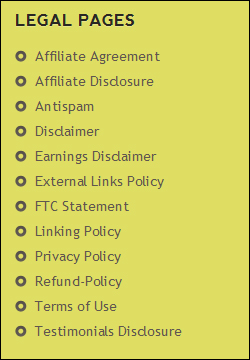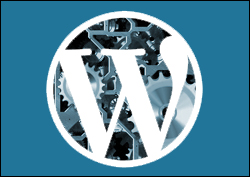
Welcome to Part 3 of our Web Site Traffic Blueprint article series, where we show you how to create an automated traffic machine using WordPress.
In Part 1 of this article series, we provided an overview of the process, and explained why using an expertly configured WordPress website or blog is the key to automating traffic to your site …
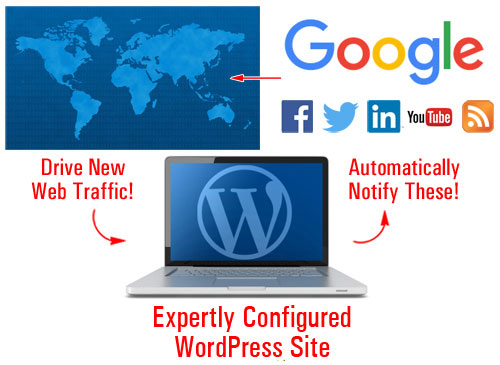
(With an expertly configured WordPress website or blog, all you have to do to drive web traffic is add great content consistently!)
In Part 2, we discussed the setup phase. We helped you understand the best way to get started if you don’t have a web presence yet, how to set everything up if you already have a site, and what to do if your existing site has been built with WordPress.
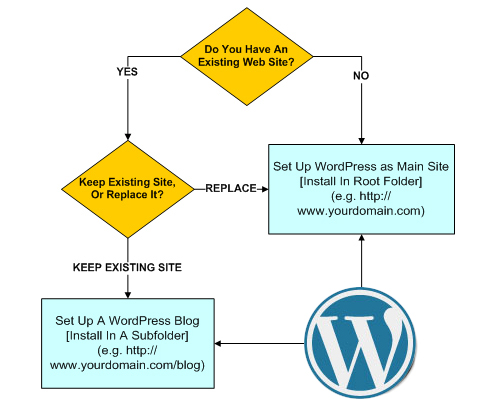
(In Part two we show you how to set up a WordPress website or blog on your domain)
In this section of the series, we will look at the configuration phase of the WordPress traffic automation system. We explain how to configure a WordPress site to ensure that new web traffic will automatically start flowing simply by adding fresh content to your website.
WordPress Web Traffic Blueprint – Configuration Phase
Being able to drive more traffic to one’s website is often cited by many business owners as the greatest challenge they face online. Businesses are becoming increasingly more competitive worldwide and are exploring every advantage they can to improve their results and performance online.
Having the ability to generate traffic on demand can provide you with a huge advantage over the competition. For business owners, an expertly configured website means having an immediate competitive advantage from the word “go”.
The Configuration Phase Is The Difference
There is a significant difference between an expertly configured WordPress site and a site that has been professionally set up by an expert website developer but not necessarily configured to take advantage of everything WordPress can offer you.
Here is a simple way to explain the difference:
With a WordPress site that has been expertly configured you get a web presence and an automated online business marketing process!
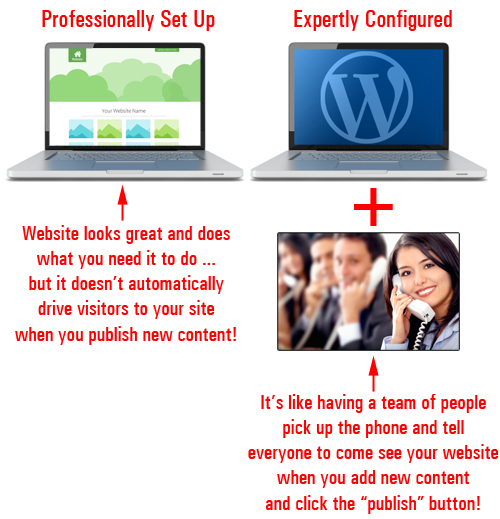
(An expertly configured website gives you a professional web presence and a built-in automated online business marketing tool!)
Not only does it take extra work to build and integrate an automated online business marketing process into your website, but also a special type of expertise.
Allow me to illustrate this point with a little story.
A Semi-True Story …
Everything was going fine in the widget assembly line when things came to a sudden stop.
No one could figure out what was wrong and so the manager decided to call in an expert.
Shortly after arriving, the expert walked immediately to the control box. After staring silently at the control unit for what seemed like 2 minutes or so, the expert then took out a teeny-weeny hammer from his tool box and made a very gentle tap about 1 cm from the bottom-right edge of the control unit.
Immediately, the plant came back to life.
The floor manager was greatly overjoyed as he thanked the expert, who left just as quickly as he had arrived.
A couple of days after resolving the incident, the manager received a request for payment of services rendered totalling $5,000.
The manager dialed the expert, demanding to know why they were being charged so much for less than 5 minutes work and then requested an itemized invoice before hanging up.
The next day, an invoice notice arrived on the manager’s desk. Upon opening the envelope, this is what he saw:
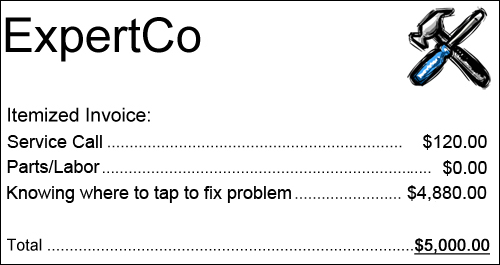
The #1 challenge most businesses face online is being able to consistently drive new traffic to their sites.
How much money did the widget plant stand to lose when production stopped working and no one on the business had the expertise to get things up and running again? Did the expert in our story not have every right to be compensated fairly for years spent developing the knowledge and expertise that allowed him to immediately fix a potentially costly problem?
Similarly, if you could have a web site fully configured so all you ever had to do is publish new content and search engines, social sites like Facebook and LinkedIn and dozens of other web properties would be instantly notified, how much time and money would this save you?
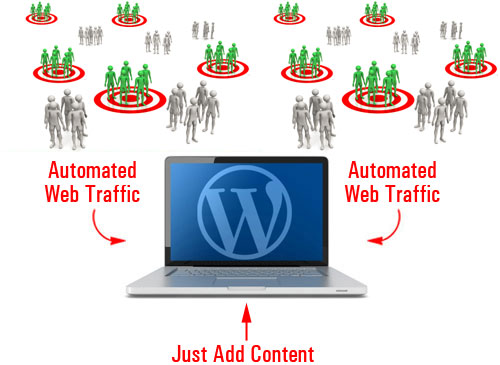
(How much better would your business be if you could automate the process of attracting new visitors to your website?)
Although the solution to many problems can seem quite simple once it’s been implemented, it rarely turns out to be that way.
Expertly configuring a WordPress site is more than adding some pages with content and configuring a few internal settings. It also involves knowing where to tap! In other words, knowing things like:
- Which programs you need to install to get desired functionalities on your site.
- Which services need to be set up to get specific outcomes
- Which internal and external settings need to be configured to ensure that things will function as expected, etc.
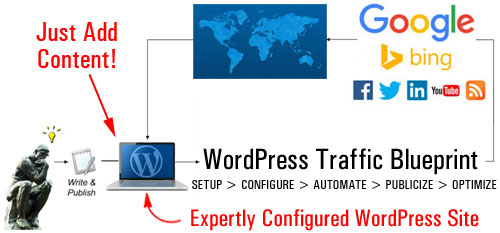
(Driving web traffic automatically with WordPress is a process that requires expertise)
This part of the traffic automation system is not technically difficult, but it’s quite complicated. It’s not as simple as installing and configuring a plugin, configuring some options and settings in your admin area or clicking a couple of buttons … it’s all of this and much more.
Expertly configuring your website involves the integration of many parts including your web server, your WP site, and various third-party sites and services …
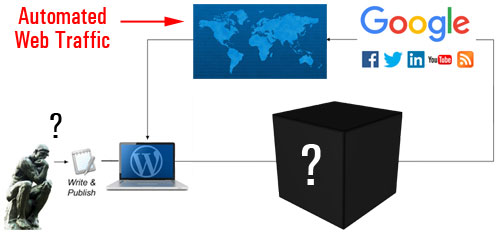
(Expertly configuring your website involves more than just configuring some settings in WordPress)
If we create a simple flowchart of the steps involved in the configuration process, it would look like this …
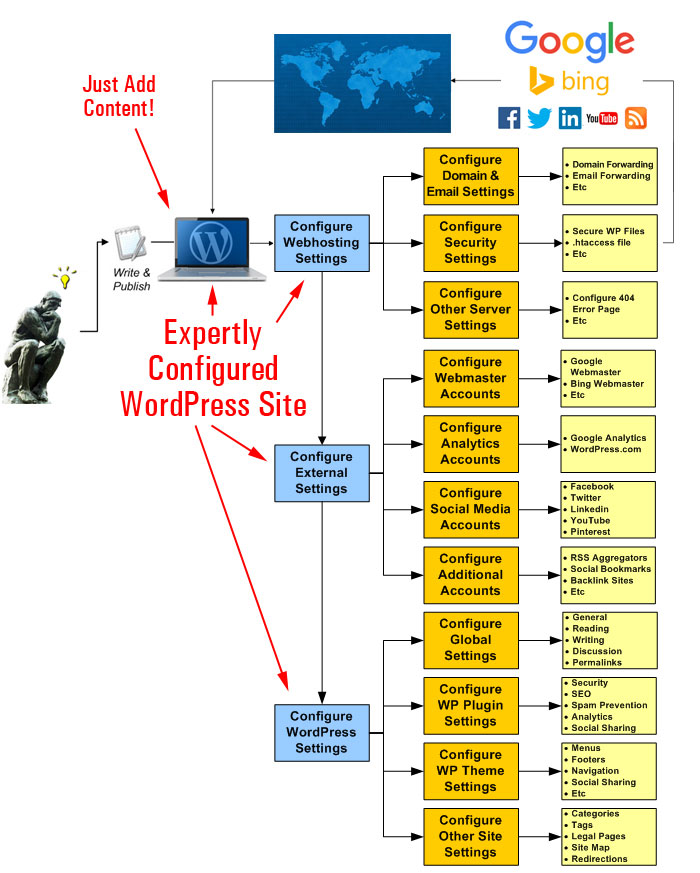
(A simplistic flowchart showing the activities involved in the configuration phase)
Let’s examine what’s involved.
Your Server – Configuration
We’re not talking about the process of configuring your web-hosting account for site installation purposes. We’re talking about tweaking settings in your web-hosting account that affect how you will handle all web traffic …
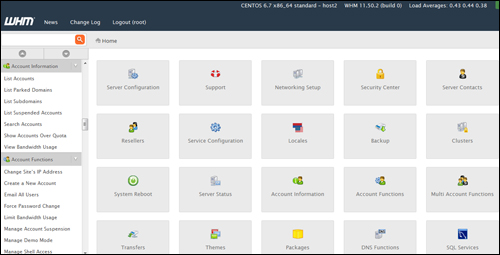
(During the configuration phase, your webhosting account settings need to be checked for handling both good and bad traffic)
Not all web traffic is beneficial traffic. Some of the traffic your website can attract will be unwelcome traffic like spam, security threats, brute-force bot attacks, etc.
This part of the configuration process, therefore, is about evaluating your needs, planning for both bad and good traffic and then adjusting settings in your server accordingly. This can include things like configuring server-level spam protection and securing server files, to configuring your domain and email redirections, etc …
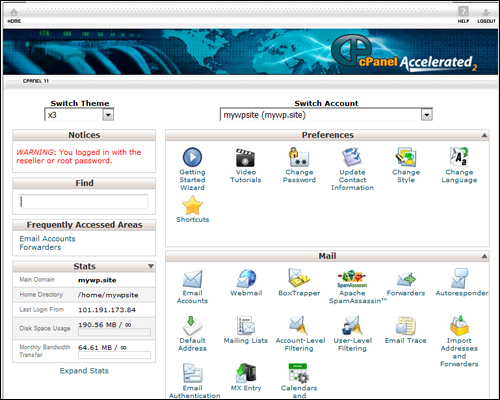
(Have you configured your control panel settings for handling things like email forwarding, page errors, etc?)
After your server settings have been checked and configured, the next step is to configure various third-party sites or online services.
Third-Party Web Properties
The basic concept of setting up external sites is that all of your content gets published to a central location (your site) and from there, it then gets automatically distributed to other parts of your traffic system, or notify traffic-related web properties and services.
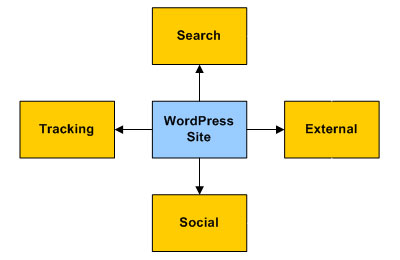
Once you add these external sites to your system, content linking back to your site will be automatically published on these platforms, indexed by search engines and shared to other social networks, even to users of the platform itself. Your content and site will then receive exposure online, helping you tap into a whole new audience and traffic source.
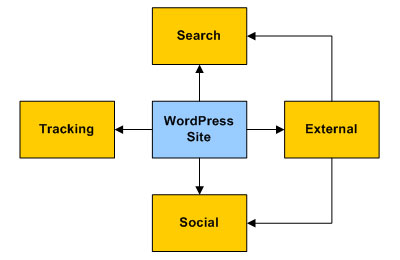
Some of these web properties and online solutions will need to have accounts set up before configuring your WordPress site’s settings to save time and some will need to be done later, during the automation phase.
For example, you will want to set up the following accounts before configuring your WordPress site’s settings:
Google Webmasters
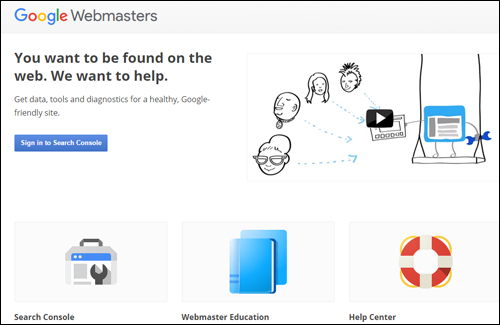
(Google Webmasters – create a Google-friendly website)
Google Search Console lets you inform Google about your site’s pages, submit XML sitemaps for automatic page indexing, and provides site owners with a range of essential information, SEO tools, and diagnostic reports about their website.
Once your account with Google Webmasters are set up, you can use this information with web traffic settings in WordPress using plugins like Yoast SEO and other applications.
Google Analytics
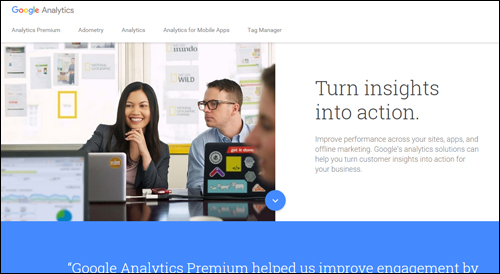
(Google Analytics)
Google Analytics lets you improve your website’s performance, SEO, marketing campaigns, and more, by tracking all user engagement, pages visited, keywords searched for, search engine and social media referrers, etc.
Once your Google Analytics account has been set up, traffic monitoring data can be easily integrated with WordPress via a simple Google Analytics plugin and instantly sent to many other useful applications.
Bing Webmaster Tools
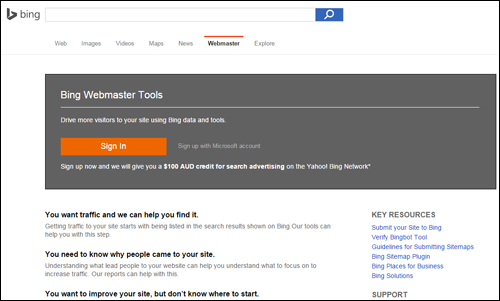
(Bing Webmaster Tools)
Bing Webmaster Tools is similar to Google Webmasters. After setting up your account and entering site data with Bing, this information can be used with web traffic settings in WordPress (e.g. using plugins like Yoast SEO – see further below) and other applications.
WordPress.com
(WordPress.com)
As explained in Part 2, WordPress provides users with the option of a hosted vs self-hosted website. We recommended choosing the self-hosted WordPress version if you plan to grow a professional online presence for your business.
WordPress.com (the hosted option), however, provides a number of useful features, which can be accessed by various WordPress plugins. We recommend setting up an account with WordPress.com, therefore, and we’ll show you how to integrate these features into your automated traffic system in the next installment of this article series.
Social Media And Social Bookmarking

(Syndicate your content automatically to your social media accounts and get new visitors to your site)
You will need to set up your various social accounts in order to configure these as part of your traffic generation system.
Once you have set up and configured everything, you will be able to syndicate your content automatically to your social media and social bookmarking accounts and attract new visitors to your site.
You should have accounts and profiles with all of the leading social networks – Facebook, Twitter, YouTube, LinkedIn, Pinterest, etc.

There are many social sites you can post your content to. You don’t need to go crazy, just choose those that will work with your setup and/or content syndication tools (we cover some of these tools in more detail further below and in the Automation phase).
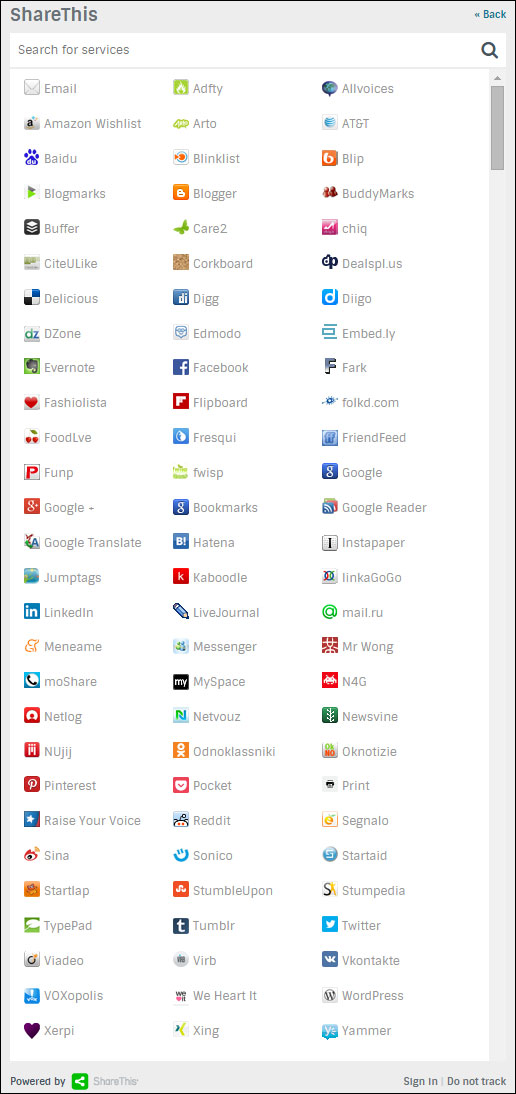
(There are many social sites you can post your content to. Image: ShareThis.com)
Additional Solutions, Aggregators, Etc.
There are a number of new online web platforms and content aggregators that can serve as second-tier sources of traffic. Some are free or provide free levels, and some are paid services.
For example, here is a content aggregator site that allows you to add your WordPress blog feed …
RebelMouse
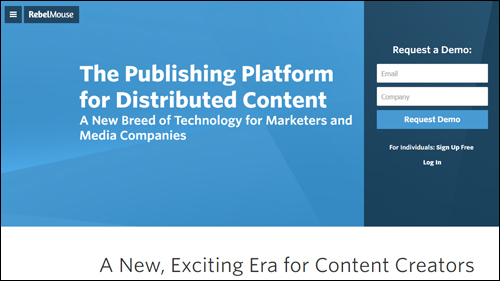
(RebelMouse)
RebelMouse is a news aggregator for your RSS feeds and social profiles. Your content displays in a Pinterest-like format and users can follow your own RebelMouse social feed.
![]()
There are various platforms that can be incorporated into your traffic blueprint. Please feel free to contact us if you need assistance exploring some of these further, or to discuss a strategy to suit your needs.
After you have configured your server settings and set up accounts with external sites, it’s time to configure your site.
WordPress Configuration
The first step in configuring your WordPress site for traffic is to make sure that its global settings have been correctly set up.
Let’s go over some of the important areas.
Configuring WordPress Settings
By default, your WordPress dashboard area includes a Settings section that allows you to configure your site’s global settings …
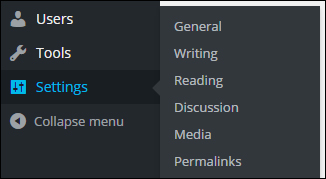
(WordPress admin menu – Settings)
General Settings
Sections like Site Title and Tagline can affect your site’s SEO, search results, etc …
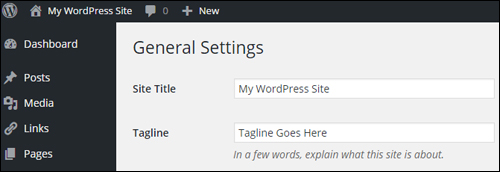
(Settings Menu – General Settings Section)
Writing
The Writing Settings area contains one of the most powerful and frequently overlooked built-in traffic notification systems available to website owners …
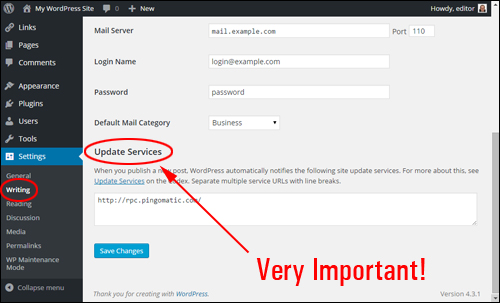
(Settings Menu – Writing Settings Area)
As stated below the Update Services section title,
When you publish a new post, WordPress automatically notifies the following site update services …
Unless you or your webmaster have purposely chosen to discourage search engines from indexing your site – see next section, then your site will automatically ping the services entered into the Update Services text area
By default, when WordPress is installed, only one service is listed …
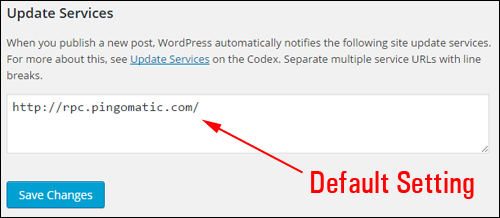
(Update Services)
WordPress lets you notify dozens of update services automatically – just add a list of update services to this section and WordPress takes care of the rest …
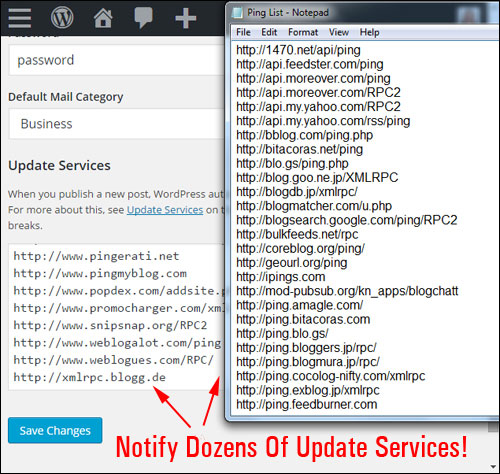
(WordPress lets you notify dozens of update services automatically!)
![]()
Download A Comprehensive List Of Ping Services For Your WordPress Site!
Click the link below to download a comprehensive list of reliable and authoritative ping services for your WordPress site or blog:
Download A List Of Ping Services For Your WordPress Site
***
Note: If you need help setting up the list of ping services on your site, we recommend using a professional web services provider. You can find professional WordPress service providers in our WordPress Services Directory.
Reading Settings
This section affects how visitors will see your content when they visit your home page and blog pages.
The syndication settings in this section can influence web traffic. For example, your choice of displaying the full text vs a summary of your post, affects how your content displays to users in RSS feeds and blog post digests, and could play a part in someone’s choice to explore your site further, and whether or not they will visit your blog to get the rest of the content from excerpts, or read the content in full without the need to click through to your site.
The main setting in this section as far as your traffic system is concerned is whether the Search Engine Visibility checkbox is ticked or not.
Generally, you want to encourage search engines to visit your site. Leaving the box unchecked enables WordPress to automatically notify various update services whenever a new post is published (see Writing Settings above). Unless you have a specific reason to discourage search indexing spiders from visiting your site, leave this box unchecked …
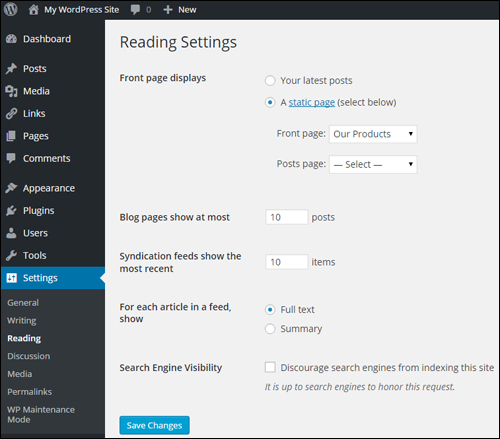
(Settings Menu – Reading Settings Screen)
Discussion
Although this section is mostly concerned with how users engage with content on your site, you have the option to allow notifications to blogs linked to from your posts, and to allow link notifications from other blogs (pingbacks and trackbacks). This can work for you, but it can also drive bad traffic in the form of SPAM comments …
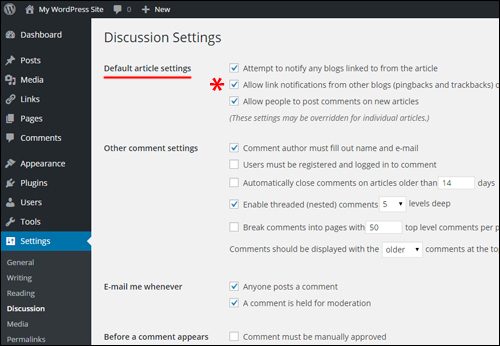
(WordPress Settings – Discussion Settings)
Permalink Settings
Permalinks allow you to display posts with SEO-friendly URLs …
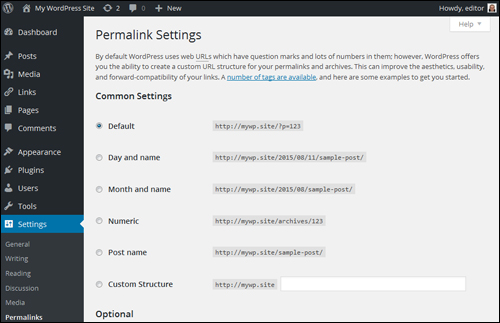
(WordPress Settings – Permalinks)
The examples below show some of the options for configuring your permalink URLs …
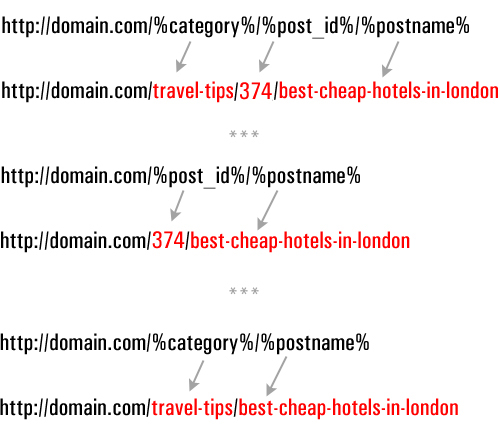
(Configuring post permalinks)
We have written a detailed tutorial on using permalinks here: Configuring Your WordPress Permalinks
Configuring WordPress Traffic Plugins
The WordPress developer community makes available plugins that can add just about every type of functionality to your website, including plugins that add traffic generation capabilities.
Here are examples of plugin categories and plugins that can help to bring more visitors to your site
Security Plugins – Blog Defender
Once again, it’s important to configure your site for dealing with the effects of both good traffic and bad traffic. No matter what type of business you run or plan to run online and how small you think your web presence is, web security is something you simply cannot ignore.
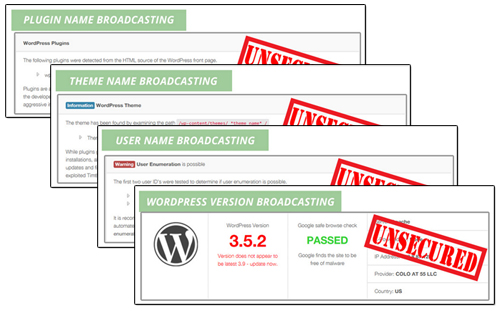 (Security Plugins help prevent bad traffic from causing your website harm)
(Security Plugins help prevent bad traffic from causing your website harm)
Security plugins like Blog Defender help to make your blog invisible to bot and hacker attacks.
Go here to learn more:
WordPress SEO Plugins – Yoast SEO
SEO plugins help drive traffic by improving the search engine friendliness of your web pages …

(SEO plugins help drive more traffic by improving the search engine friendliness of your website)
A plugin like Yoast SEO (previously known as WordPress SEO by Yoast) can significantly improve your website’s search engine optimization. When properly configured, the Yoast SEO plugin not only makes your web pages easier for search engines like Google and Bing to index, it also lets you specify how to present your content in Google’s search results and social media sites Twitter, Facebook, and Google+.
WordPress Social Plugins
Allowing your visitors to share your content with others online can help to increase traffic to your site, especially if you provide content that adds real value to readers.

(WordPress users can easily add social features to their website with free or inexpensive plugins)
You can easily add social sharing features to your website with free or inexpensive plugins.
Many social plugins let you choose which sites your content can be shared to, embed social buttons into your content, set up default post messages, display/hide share counters (e.g. number of likes), etc. Some plugins even allow you to set up protected content sections on your site which visitors can unlock by liking your page.
WordPress – Theme Settings
As well as configuring various plugins, many WordPress themes also include features that can help improve your site’s traffic generation capabilities.
For example, in addition to options and settings for configuring the design and layout of your website, some themes also include options for improving SEO and site linking structure for better indexing, add tracking, social sharing buttons, etc …

(Many WordPress themes include built-in traffic optimization features)
With a number of themes, adding social sharing features to your content is as easy as clicking a button …
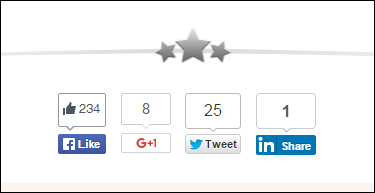
(Many WordPress themes have built-in social sharing features that can be easily turned on with the click of a button)
WordPress Traffic Automation – Other Important Aspects To Consider
Last but not least in the traffic configuration process, are the components that need to be configured outside of the global settings.
This includes the following:
Legal Pages
Once again, when preparing your site for a growth in visitor numbers, it’s important to plan not only how to handle bad and good traffic but also for all the things that can go wrong as more and more people find and begin to visit your website.
If you engage in any form of commercial activity online (or plan to), you need to make sure that your site is compliant with all legal requirements.
If you need help adding compliance pages to WordPress, go here:
WordPress Post Tags And Post Categories
Categories & post tags help improve traffic by improving your site’s search engine optimization.

(Categories help improve traffic by improving your site’s search engine optimization.)
As we recommend in this article, it’s best to review and set up your site’s post categories and tags during the Website Planning Stages.
When configuring your website to automate and improve web traffic, you will want to review and make sure that the categories and tags that have been set up.
Add A Site Map To Your WordPress Site
A site map that lists all of your pages and posts to visitors is not only a useful navigation tool for users, it can also help external sites discover more of your online content …
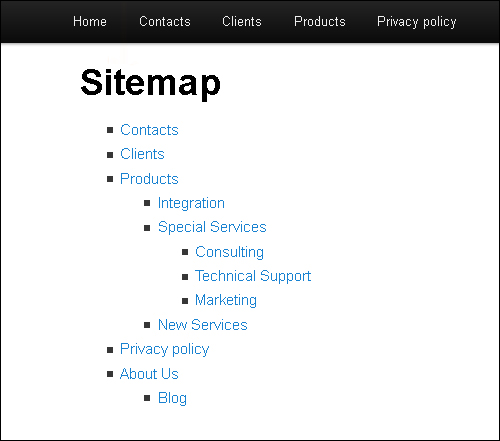
(Site Map – great for visitors and beneficial for web traffic too!)
![]()
It’s important to note that an HTML site map and an XML sitemap are not the same thing. HTML site maps are web pages that provide users with a logical map of how your content is structured, whereas XML sitemaps are mostly filled with code that only search engine bots can read. Although Google will index your pages just using an XML sitemap (which plugins like Yoast SEO can provide – see earlier section), making it easier for visitors to find more pages on your site results in increased traffic.
Configure Your Site’s 404 Error Page
When online users enter the wrong URL or click on a dead link, they will normally be greeted with an error page …
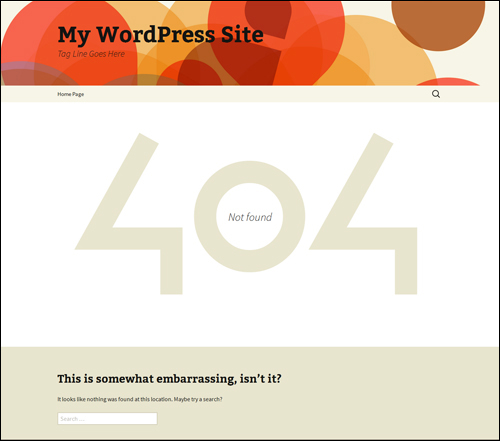
(A WordPress 404 Error Page)
A 404 Not Found error page can be turned into a useful source of traffic to your functional web pages …
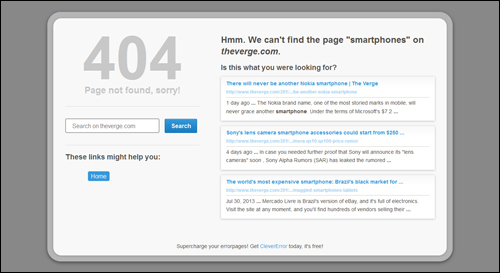
(Configuring your 404 Error Page allows you to recover traffic that may otherwise be lost.)
![]()
Although a 404 Not Found page can be set up on your server, there are WordPress plugins that let you easily configure your 404 page inside your WordPress dashboard.
WordPress Traffic Blueprint: Configuration Process – Summary
Once your site has been expertly configured and fully set up, all you need to do then to generate traffic is add web content on a regular basis.
The process of expertly configuring your WordPress site, however, is quite involved and elaborate , requiring the configuration and integration of a number of different components and external web properties …
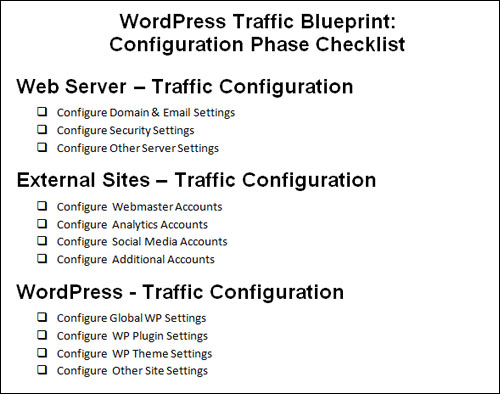
(Traffic System – Configuration Checklist)
![]()
The expertise involved in expertly configuring a WordPress site can take some website developers months to acquire.
Once you have configured your WordPress site, the next step is to automate the process. This step is covered in the next section of our series.
This is the end of Part 3
To read the rest of this article, click here:
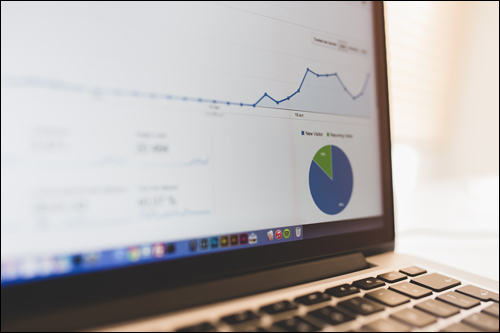
![]()
This tutorial is part of a comprehensive tutorial series designed to help business owners learn how to grow their business online inexpensively with a WordPress website or blog and proven web marketing strategies.
Want To Get Notified When New Tutorials Are Published? Then Subscribe Using The Form Below!
***
"This is AMAZING! I had learnt about how to use WordPress previously, but this covers absolutely everything and more!! Incredible value! Thank you!" - Monique, Warrior Forum
***


